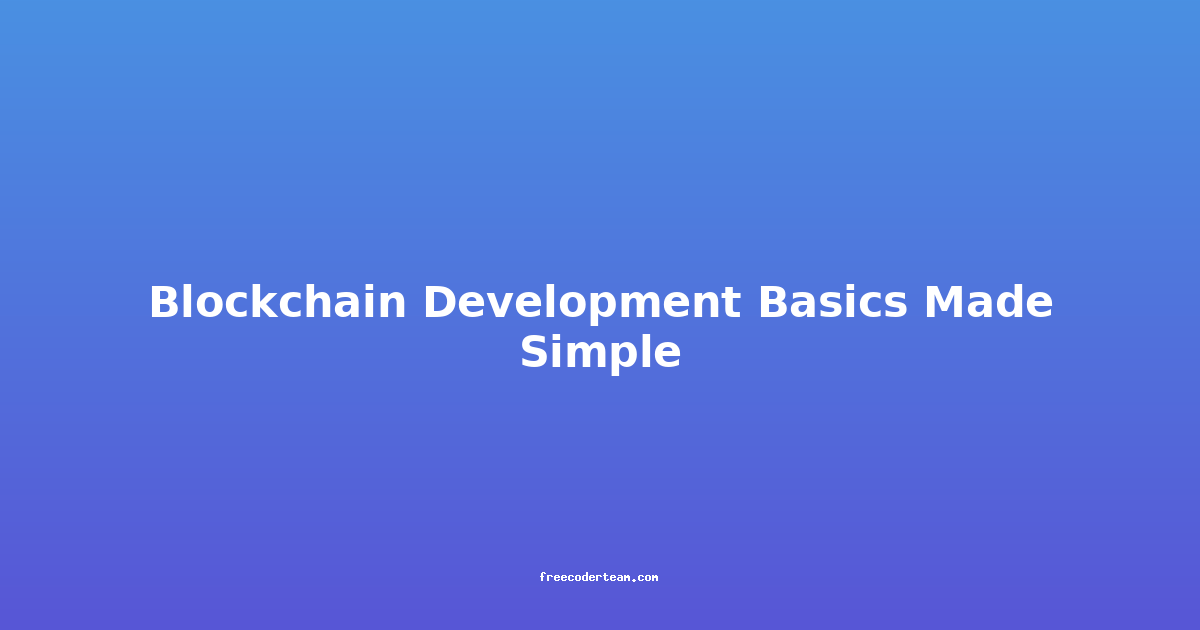Understanding Caching Strategies: Enhancing Performance and Scalability
Caching is a fundamental technique used in software development to improve performance, reduce latency, and enhance scalability. By storing frequently accessed data in a high-speed storage layer, caching allows applications to retrieve information much faster than fetching it from a database or external service. In this comprehensive guide, we'll explore caching strategies, their benefits, practical examples, best practices, and actionable insights to help you implement caching effectively.
Table of Contents
- What is Caching?
- Why Use Caching?
- Key Caching Strategies
- Practical Examples
- Best Practices for Caching
- Challenges and Considerations
- Conclusion
What is Caching?
Caching involves storing a copy of frequently accessed data in a faster, temporary storage layer, such as in-memory or on-disk, to reduce the load on the primary data source (e.g., a database or API). When a request is made, the system first checks the cache. If the data is found there (a cache hit), it is served directly from the cache, bypassing the slower data source. If the data is not in the cache (a cache miss), it is fetched from the primary source and then stored in the cache for future use.
Key Terms:
- Cache Hit: A successful retrieval of data from the cache.
- Cache Miss: When the requested data is not found in the cache, and the system must fetch it from the primary source.
- Time to Live (TTL): The duration for which data remains valid in the cache before it is considered stale.
Why Use Caching?
- Improved Performance: Reduces the latency of data retrieval by serving requests from a faster storage layer.
- Reduced Load: Offloads traffic from databases, APIs, or other backends, improving their performance and scalability.
- Scalability: Enables applications to handle higher traffic volumes without compromising performance.
- Cost Efficiency: Can reduce costs by minimizing the need for expensive database queries or API calls.
Key Caching Strategies
There are several caching strategies, each with its own use cases and trade-offs. Let's explore the most common ones:
1. Time-Based Expiration (TTL)
Description: Data in the cache is stored for a fixed period (TTL). After the TTL expires, the data is removed from the cache, and subsequent requests will result in a cache miss.
Use Case: Suitable for data that doesn't need to be perfectly up-to-date, such as product catalogs or weather forecasts.
Example: A weather app caches the current weather for a city with a TTL of 10 minutes. After 10 minutes, the cache is invalidated, and the app fetches the latest data.
from datetime import datetime, timedelta
class TimeBasedCache:
def __init__(self, ttl=600): # Default TTL: 10 minutes
self.data = {}
self.ttl = timedelta(seconds=ttl)
def set(self, key, value):
self.data[key] = {
"value": value,
"timestamp": datetime.now()
}
def get(self, key):
if key in self.data:
entry = self.data[key]
if datetime.now() - entry["timestamp"] < self.ttl:
return entry["value"]
else:
del self.data[key] # Invalidate the cache
return None
# Usage
cache = TimeBasedCache(ttl=300) # TTL: 5 minutes
cache.set("user_data", {"name": "Alice", "age": 30})
print(cache.get("user_data")) # Returns the cached value
2. Cache Aside Pattern
Description: The application first checks the cache for the requested data. If it's not found (cache miss), the application fetches the data from the primary source, updates the cache, and then returns the data.
Use Case: Ideal for scenarios where data is frequently accessed but occasionally updated.
Example: A web application caches blog posts. When a user requests a post, the application first checks the cache. If the post is not cached, it fetches it from the database, stores it in the cache, and then serves it to the user.
class CacheAside:
def __init__(self, cache, database):
self.cache = cache
self.database = database
def get_post(self, post_id):
# Check the cache
cached_post = self.cache.get(post_id)
if cached_post:
return cached_post
# Fetch from the database
post = self.database.get_post(post_id)
# Update the cache
self.cache.set(post_id, post)
return post
# Usage
cache = TimeBasedCache(ttl=3600) # TTL: 1 hour
db = Database() # Assume a Database class
cache_aside = CacheAside(cache, db)
print(cache_aside.get_post(123)) # Returns the post, either from cache or database
3. Write Through Cache
Description: When an application writes to the cache, it also writes the same data to the primary data source. This ensures consistency between the cache and the primary source.
Use Case: Suitable for cases where data consistency is critical, such as financial transactions.
Example: A banking application updates a user's balance in the cache and then writes the same update to the database.
class WriteThroughCache:
def __init__(self, cache, database):
self.cache = cache
self.database = database
def update_balance(self, user_id, new_balance):
# Update the cache
self.cache.set(user_id, new_balance)
# Update the database
self.database.update_balance(user_id, new_balance)
# Usage
cache = TimeBasedCache(ttl=3600) # TTL: 1 hour
db = Database() # Assume a Database class
write_through = WriteThroughCache(cache, db)
write_through.update_balance(456, 1000) # Updates both cache and database
4. Write Behind Cache
Description: Writing is performed asynchronously. When an application updates the cache, it queues the update to the primary data source. This reduces latency for write operations but introduces a risk of data inconsistency if the primary source fails.
Use Case: Suitable for write-heavy applications where latency is more critical than immediate consistency.
Example: A logging system caches logs in memory and asynchronously writes them to a database.
import threading
class WriteBehindCache:
def __init__(self, cache, database):
self.cache = cache
self.database = database
self.queue = []
self._start_flush_thread()
def update_log(self, log_data):
# Update the cache
self.cache.set("log", log_data)
# Queue the update for the database
self.queue.append(log_data)
def _start_flush_thread(self):
def flush_queue():
while True:
if self.queue:
log_data = self.queue.pop(0)
self.database.update_log(log_data)
flush_thread = threading.Thread(target=flush_queue)
flush_thread.daemon = True
flush_thread.start()
# Usage
cache = TimeBasedCache(ttl=3600) # TTL: 1 hour
db = Database() # Assume a Database class
write_behind = WriteBehindCache(cache, db)
write_behind.update_log("User logged in") # Updates cache and queues database update
5. Read Through Cache
Description: When a cache miss occurs, the application fetches the data from the primary source and automatically populates the cache. Subsequent requests will hit the cache.
Use Case: Useful for reducing database queries for frequently accessed data.
Example: A shopping cart application caches the cart contents. If a user's cart is not in the cache, it is fetched from the database and stored in the cache.
class ReadThroughCache:
def __init__(self, cache, database):
self.cache = cache
self.database = database
def get_cart(self, user_id):
# Check the cache
cached_cart = self.cache.get(user_id)
if cached_cart:
return cached_cart
# Fetch from the database
cart = self.database.get_cart(user_id)
# Populate the cache
self.cache.set(user_id, cart)
return cart
# Usage
cache = TimeBasedCache(ttl=3600) # TTL: 1 hour
db = Database() # Assume a Database class
read_through = ReadThroughCache(cache, db)
print(read_through.get_cart(123)) # Returns the cart, either from cache or database
Practical Examples
Example: Implementing a Simple Cache in Python
Let's implement a basic caching system using Python's dict as the storage layer.
class SimpleCache:
def __init__(self):
self.cache = {}
def set(self, key, value):
"""Store data in the cache."""
self.cache[key] = value
def get(self, key):
"""Retrieve data from the cache."""
return self.cache.get(key)
def delete(self, key):
"""Remove data from the cache."""
if key in self.cache:
del self.cache[key]
# Usage
cache = SimpleCache()
cache.set("user_name", "Alice")
print(cache.get("user_name")) # Output: Alice
cache.delete("user_name")
print(cache.get("user_name")) # Output: None
Best Practices for Caching
- Choose the Right Cache Type: Use in-memory caches (e.g., Redis, Memcached) for fast access or distributed caches for scalability.
- Set Appropriate TTLs: Balance freshness and performance by setting TTLs based on data volatility.
- Monitor Cache Hit Rates: Track the percentage of requests served from the cache to optimize caching strategies.
- Handle Cache Invalidation: Implement mechanisms to invalidate cache entries when the underlying data changes.
- Avoid Cache Contention: Use distributed locks or optimistic concurrency to handle simultaneous writes.
- Test Thoroughly: Validate caching behavior in different scenarios, including cache misses and TTL expiration.
Challenges and Considerations
- Stale Data: Caching can introduce staleness, especially with TTL-based strategies. Ensure that stale data doesn't impact critical operations.
- Cache Pollution: Frequent cache misses can overwhelm the primary data source. Monitor cache hit rates to identify and address this issue.
- Complexity: Implementing caching can add complexity to your application, especially when dealing with distributed systems.
- Data Consistency: Ensure that cache and primary data sources remain consistent, especially in write-heavy applications.
Conclusion
Caching is a powerful tool for improving application performance and scalability. By understanding different caching strategies and their trade-offs, you can implement caching effectively to meet the specific needs of your application. Whether you're using TTL-based expiration, the cache-aside pattern, or more advanced strategies like write-through or write-behind caching, the key is to balance performance, consistency, and maintainability.
Remember to monitor your caching implementation, adjust TTLs as needed, and handle cache invalidation carefully. With the right strategy and implementation, caching can significantly enhance the user experience and reduce the load on your backend systems.




